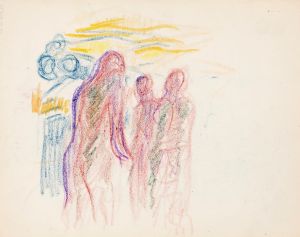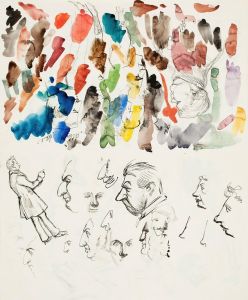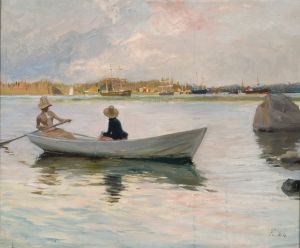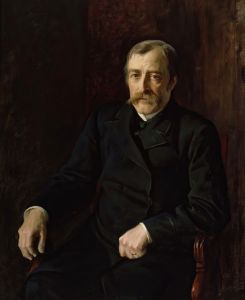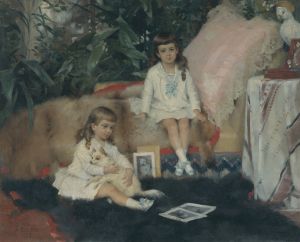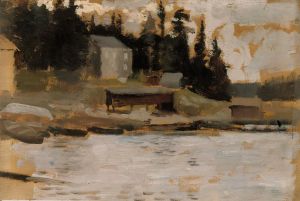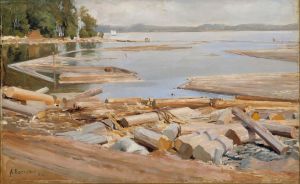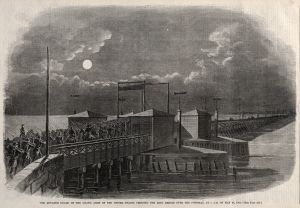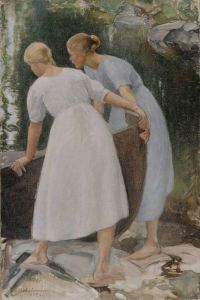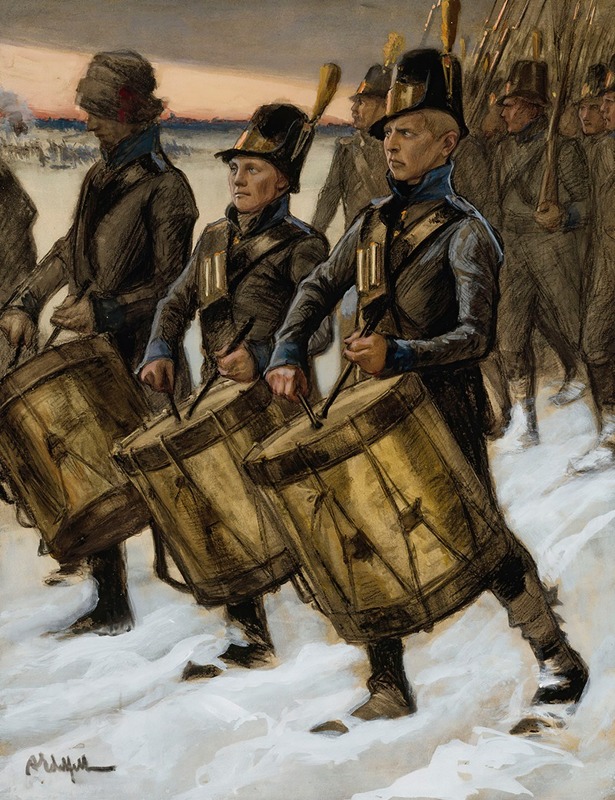
The March Of The Björneborg Regiment
A hand-painted replica of Albert Edelfelt’s masterpiece The March Of The Björneborg Regiment, meticulously crafted by professional artists to capture the true essence of the original. Each piece is created with museum-quality canvas and rare mineral pigments, carefully painted by experienced artists with delicate brushstrokes and rich, layered colors to perfectly recreate the texture of the original artwork. Unlike machine-printed reproductions, this hand-painted version brings the painting to life, infused with the artist’s emotions and skill in every stroke. Whether for personal collection or home decoration, it instantly elevates the artistic atmosphere of any space.
Albert Edelfelt's painting "The March of the Björneborg Regiment" is a significant work of art that captures a moment from Finnish military history. Painted in 1892, this artwork is a vivid representation of the Finnish Björneborg Regiment, a unit with a storied past that dates back to the 17th century. The regiment was part of the Swedish army, as Finland was under Swedish rule until 1809.
Edelfelt, a prominent Finnish painter, was known for his ability to blend historical accuracy with artistic expression. In this painting, he depicts the regiment during the Finnish War (1808-1809), which was part of the Napoleonic Wars. This conflict ultimately led to Finland being ceded from Sweden to Russia, marking a significant shift in Finnish history.
The painting is celebrated for its attention to detail and the way it captures the spirit and discipline of the soldiers. Edelfelt's use of color and composition brings to life the regiment's march, set against a backdrop that suggests the Finnish landscape. The soldiers are shown in their uniforms, which are historically accurate for the period, and the painting conveys a sense of movement and purpose.
Edelfelt's work is not only a tribute to the regiment but also a reflection of Finnish national identity and pride. During the late 19th century, there was a growing sense of nationalism in Finland, and art played a crucial role in expressing and shaping this identity. By choosing to depict the Björneborg Regiment, Edelfelt was contributing to the narrative of Finnish resilience and the country's historical journey.
The painting is housed in the Ateneum Art Museum in Helsinki, which is part of the Finnish National Gallery. It remains an important piece in the collection, admired both for its artistic merit and its historical significance. Edelfelt's ability to capture the essence of a pivotal moment in Finnish history has ensured that "The March of the Björneborg Regiment" continues to be a source of inspiration and reflection for viewers.
Albert Edelfelt himself was a key figure in Finnish art, and his works often explored themes of history, culture, and identity. He studied in Paris and was influenced by the realism movement, which is evident in his meticulous attention to detail and his ability to portray human emotion and historical context with authenticity.
In summary, "The March of the Björneborg Regiment" is a masterful painting that not only showcases Edelfelt's skill as an artist but also serves as a historical document of Finnish military history. It captures a moment of transition and pride, reflecting the broader themes of national identity and historical change that were prevalent during Edelfelt's time.





